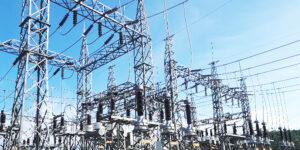
Last week, what was defined as a “low pressure area” and “shear line” in terms of meteorological terms, affected parts of the Philippines, including Negros Island. These few days of bad weather resulted in flooding, landslides, evacuations, agricultural damage and school cancellations in many different areas all over the country.
According to reports, 15,198 persons from 4,476 families were affected by the floods and heavy rains and an estimated P30.4M worth of crops were ruined by the weather. Classes in all levels in public and private schools were also cancelled for 2-3 days, despite no typhoon signal being raised, which, if you come to think of it, must be how climate change feels like.
We are already familiar with the term low pressure area, or LPA, which in my mind, simply means a few days of abnormally wet weather but normally is nothing drastic. From my experience as a human being, an LPA is simply a warning to bring raingear or an umbrella, and not to get a carwash yet.
The new weather term being bandied around is “shear line,” which I have never heard of before. Although government and media has been using the term a lot recently, I never bothered looking it up and simply assumed it was just an LPA with an attitude but is not yet mean enough to be a typhoon.
Anyway, after last week, I finally looked up the term. According to the glossary of the American Meteorological Society, a shear line is a narrow zone across which there is an abrupt change in the horizontal wind component parallel to this line; a line of maximum horizontal wind shear. As a layman, I did not understand a word of this so I naturally turned to Wikipedia, which still contained so many meteorological terms that I won’t waste space defining it anymore. Suffice to say, it is a technical term for a weather-related phenomenon.
The recent use of the difficult to define term ‘shear line’ by PAGASA tells me that they are having trouble defining the new breed of weather disturbances affecting the country. If in the olden days, it was simple as waiting for the weather bureau to declare Typhoon Signal numbers 1-5 before taking action, it looks like local government officials will now have to deal with weather phenomena like the new breed of LPA, shear lines and whatever comes next.
To be fair to the public officials who called off classes for 2-3 days while it was just raining normally in most places because that’s what LPAs do, other places were already experiencing floods and landslides, so erring on the side of caution makes sense. However, without a proper protocol and/or definition from PAGASA and national government, the future becomes very confusing for school officials and parents every time an LPA is spotted (which is quite often), especially if it comes with a shear line (which nobody actually knows what it really means).
Climate change is upon us and if we don’t adapt, we are going to get washed away. There are so many things we must do and haven’t done, and one would be for PAGASA to consider restructuring its storm signal warnings. After a few episodes of LPA, habagat, shear line and whatever whatnot that turned out to be destructive and disruptive even if it wasn’t defined as a typhoon because storm signals weren’t raised, a review of the that would seem to be the most sensible course of action for any weather bureau.
This is what it means when they say we need to make our societies resilient as the climate changes. If we are not going to allow an LPA or shear line to regularly cancel classes and cause landslides, the quickest solution would be to change its definition so we can say a typhoon did it. Or at least come up with new warning signals that can help us prepare and cope with the new moods of the weather.
On the other hand, if these weather phenomena are going to be normal, maybe we should start making our schools, students and transport systems more rain proof so we don’t have to cancel classes so easily every time. Or, since we should now be prepared for outbreaks and bad weather, an online backup protocol should be in place.
At the same time, our leaders will need to go beyond lip service when they say the will make our towns and cities resilient. When it comes to flood and landslide proofing, that means spending a lot on infrastructure, improvements and response mechanisms in order to achieve real “resiliency” instead of passing that job to regular Filipino who by now understand fully well what we have to do to fend for ourselves when crap happens.
For now, PAGASA and LGUs have to start getting their act together and figure out a better way to deal with the changing climate. Updating our storm signal warning system shouldn’t be that hard to do. Hopefully that can be done before the next undefined storm comes along…*







